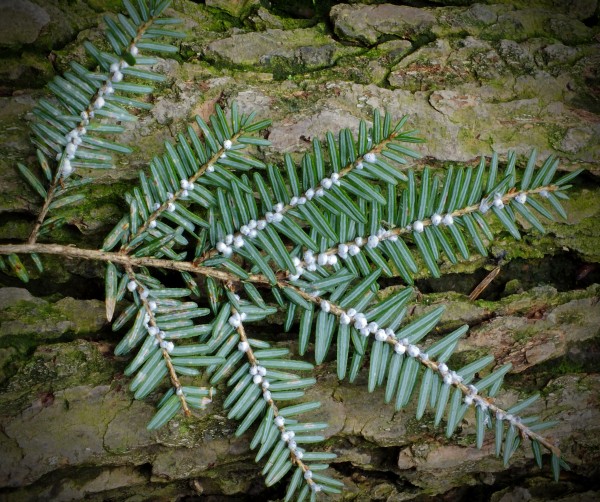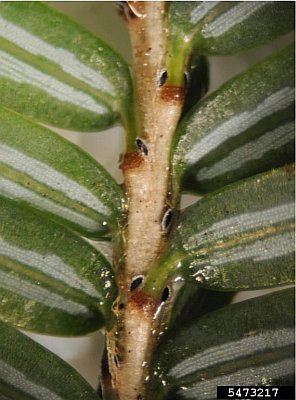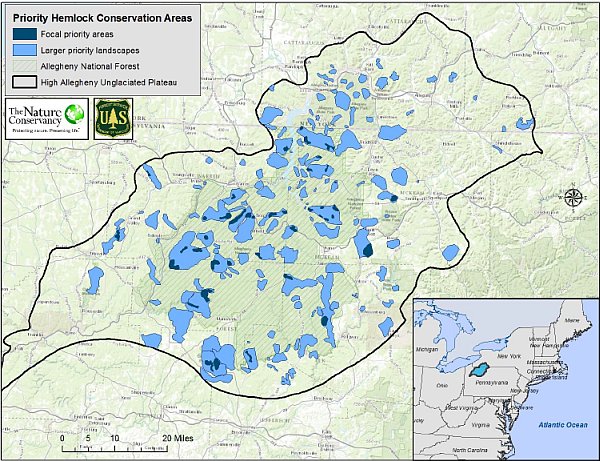
Yesterday I mentioned hemlock woolly adelgid, a really bad invasive insect that’s killing our eastern hemlock forests. It devastated the southern Appalachians (click here to see, here to read) and has moved north into south, central and eastern Pennsylvania. Has it conquered the Allegheny High Plateau? Now’s the best time to find out.
Hemlock woolly adelgids (Adelges tsugae) have no North American predators and a very unusual lifestyle. Originally from Japan, they kill eastern hemlocks in 4-20 years by locking onto the underside of their branches and sucking the lifeblood out of them.
The adults are female, immobile and practically microscopic. Twice a year they reproduce asexually, laying up to 300 eggs a year in woolly white egg sacs that protect their young. The larvae, present in April and July, are the only mobile phase and so tiny that they spread easily on the wind or hitchhike unseen on birds, animals and humans.

Harsh winters used to protect Pennsylvania’s hemlocks but the climate is warming. Our worst fears were realized when they were found in Cook Forest in March 2013. Last winter’s Polar Vortex reduced that infection 90-100% but the bugs are poised to take off again. Unfortunately the only biological control, a tiny beetle, is even less winter-hardy than the pest so the only way to save our hemlocks right now is by treating individual trees with pesticide. (*)
What trees should be treated? The Nature Conservancy, the U.S. Forest Service and DCNR have teamed up to survey the area from Cook Forest to New York’s Allegany State Park (click on this map to see a larger version).
It’s a big area and they need your help. Don’t worry, it’s easy.
In the winter hemlock woolly adelgid egg sacs are large and visible (see top photo). If you’re in this region — even for a quick hike or birding trip — take a moment to notice the underside of hemlock branches. Birders, you may accidentally find this while looking at a bird.
Report infections by calling or emailing the location to one of the folks on this list of contacts. (Contact any of them and they’ll forward the information if necessary).
Do you need more information before you begin? Contact Sarah Johnson at The Nature Conservancy, sejohnson@tnc.org, 717-232-6001 Ext 231.
Start looking now.
(photo credits:
top photo, wool sacs: Nicholas Tonelli via Wikimedia Commons
middle photo, adults: Ashley Lamb, Virginia Polytechnic Institute and State University, Bugwood.org
map: courtesy The Nature Conservancy and U.S. Forest Service. Click on the map to see a larger version.)
(*) Note: Work is underway to breed winter-hardy biological controls. It just takes time.

Thanks Kate. We are in the woods almost every weekend so will start looking. The hemlock is my guy’s favorite tree…worrisome that they are under threat.
I have seen this hemlock horror many times in the last 20 years in southern and eastern PA, but never on the Allegheny Plateau. I hike several times a year on the plateau and will speak up if I spot anything. It’s very alarming that it has reached Cook Forest.